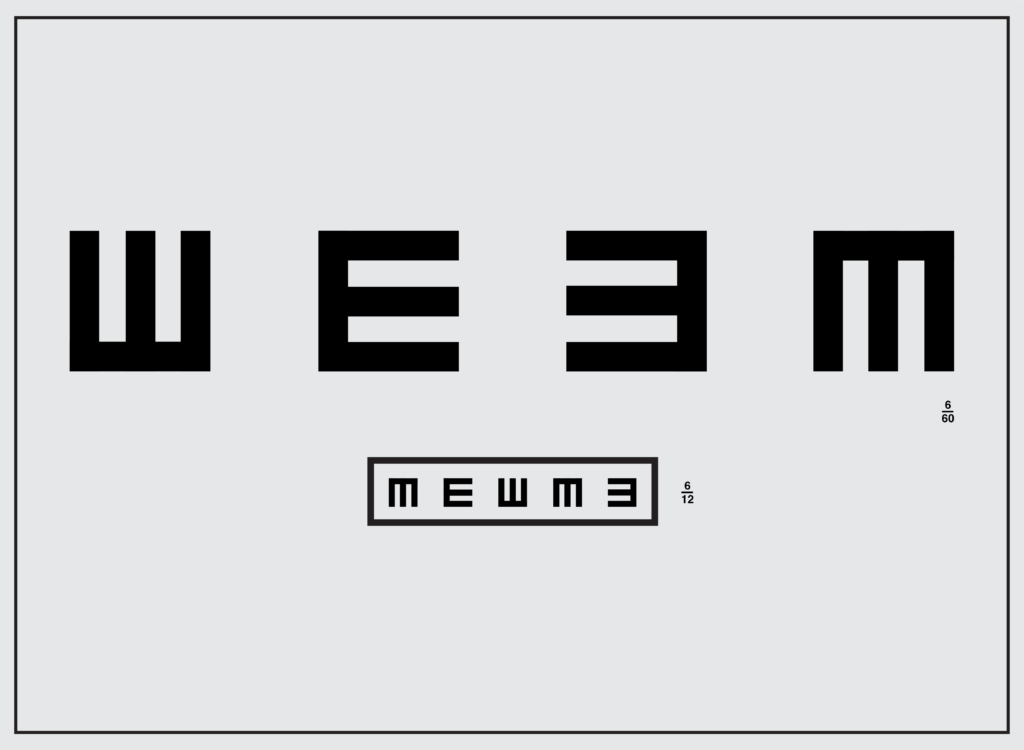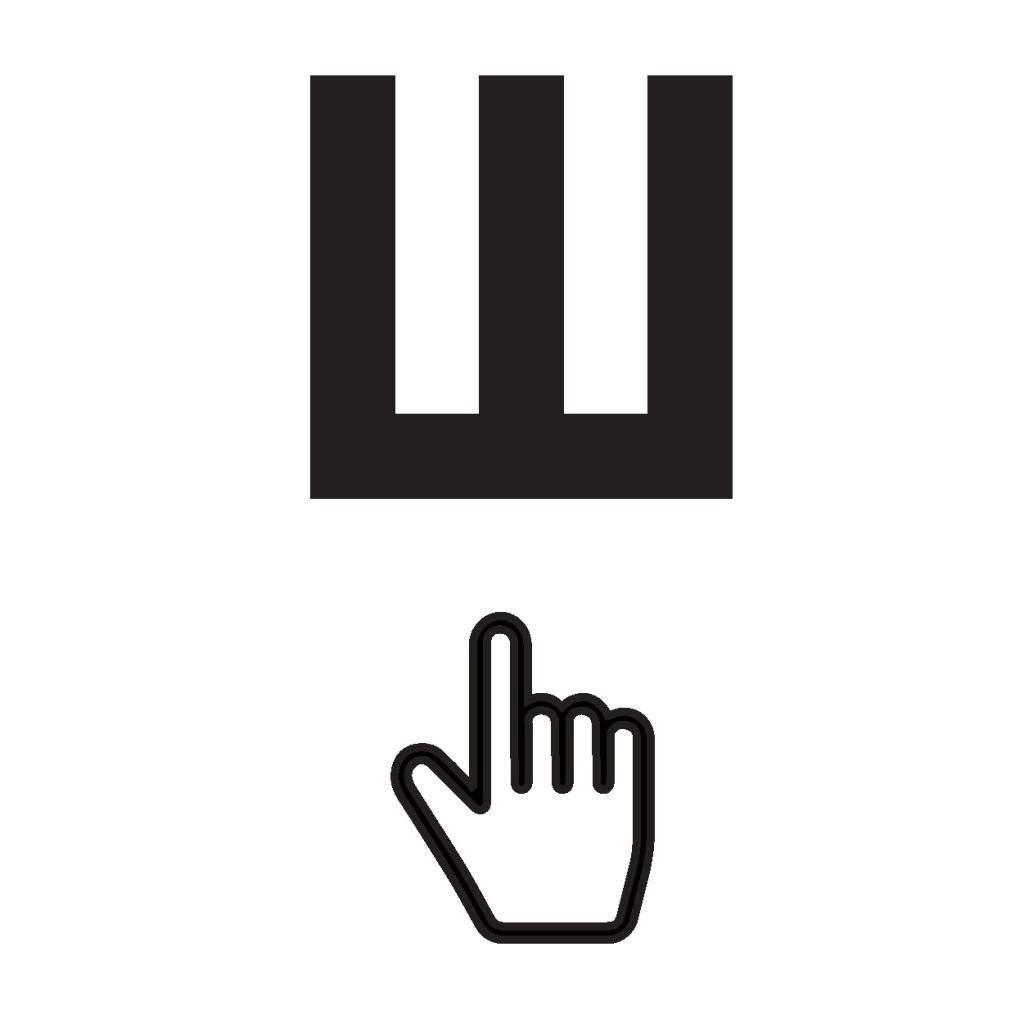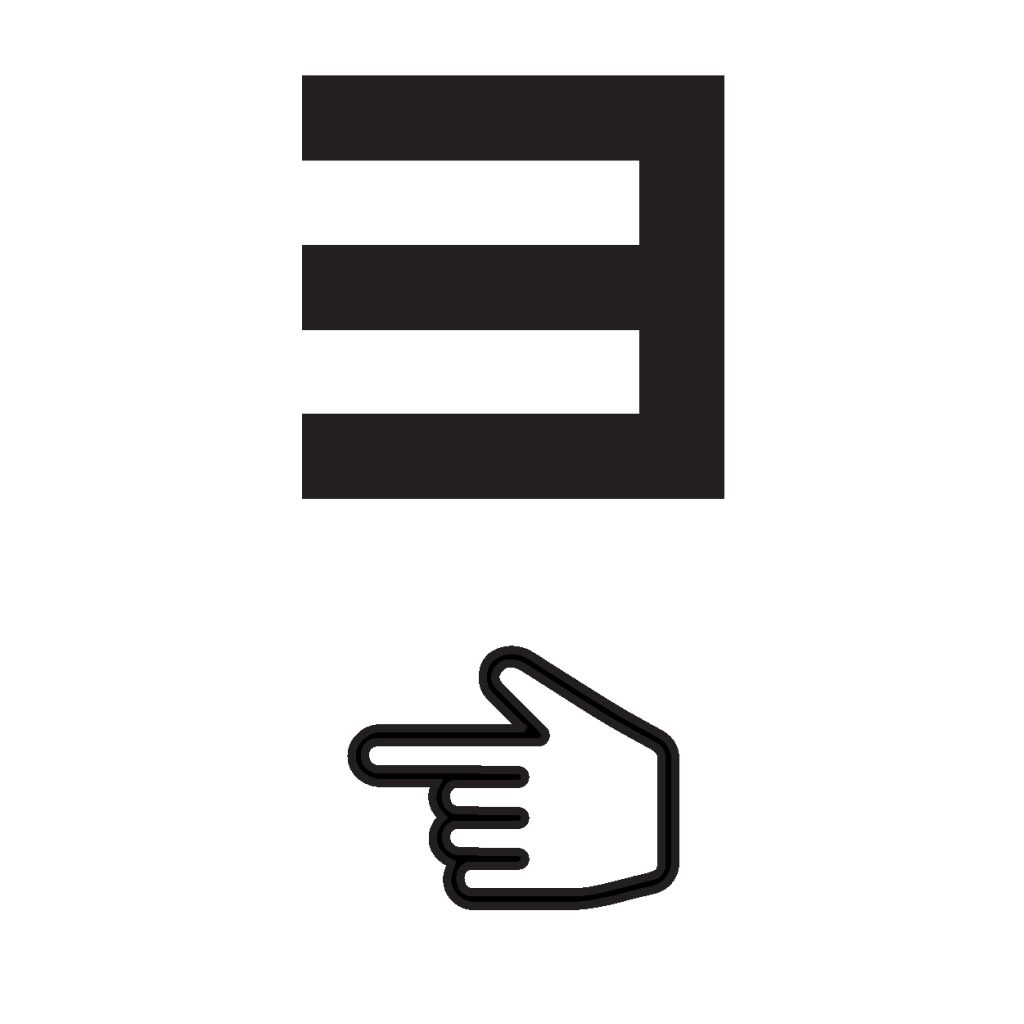Distance vision screen for children older than 8 years
Instruction
In this topic you will learn how to carry out a distance vision screen for children older than 8 years, using an E chart.
Distance vision screen
Chart
Instruction
For children older than 8 years select the E chart on the form.


Explain the vision screen using the E chart.
- Explain that for each E you point to, they show the direction the E is facing with their hand, or by telling you.
Check they understand. Correct if necessary.
- Point underneath an E on the top line (6/60) of the chart
- Ask the child to show or tell you which direction the E is facing: up, down, right or left.




Spectacles
Question
If a child wears near vision spectacles, should they wear them for the distance vision screen?
No is correct!
Near vision spectacles are for near vision activities like reading. A child does not need to wear them for a distance vision screen.
Instruction
Start with the child’s right eye and top line.
Ask the child to cover their left eye with an occluder (or palm of their left hand), leaving the right eye open to see.
Question
When explaining to the child how to cover their eye you should:
Ask the child to press their hand onto their eye, to make sure it is covered properly.
Is this statement true or false?
False is correct!
Pressing down on the eye with the hand can be harmful. It can also make it more difficult to see clearly out of that eye after being pressed.
Carry out distance vision screen
Instruction
Watch this video of a health worker carrying out a Distance vision screen for a child older than 8 years.
Activity
In groups:
- Explain the distance vision screen using the E chart
- Agree whether they show the direction the E is facing with their hand, or by telling you. Practice to check they understand
- Complete the test
- Record the result on the Screen form.
Take turns to be screener and person being screened.
Results
Results using the E chart are recorded in the same way as the HOTV chart.
The same number of letters must be matched correctly to Pass on the top line (6/60) and bottom line (6/12) using the E chart and HOTV chart.

